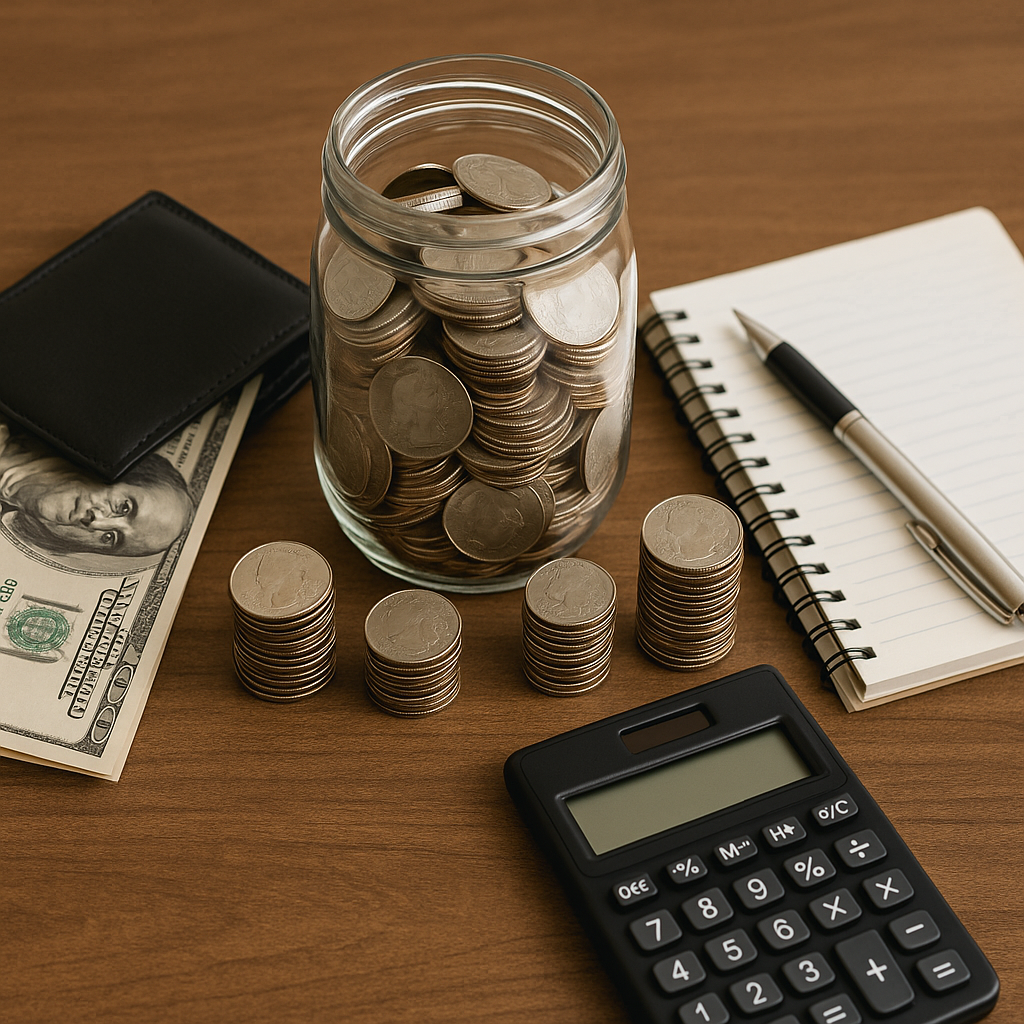10 real strategies to save more money every month without effort

10 real strategies to save more money every month without effort
Published in July 2025 | Category: Finance

Saving money doesn’t have to be a daunting task. With a few simple adjustments to your daily habits, you can improve your finances without compromising your lifestyle. Below are ten proven strategies to help you start saving consistently and effectively.
Table of Contents
- Automate Your Savings: Pay Yourself First
- Track Your Expenses in Detail
- Cook at Home at Least Three Times a Week
- Plan Your Shopping with a List
- Identify and Eliminate Small Daily Expenses
- Use Reward Cards (and Pay Them on Time)
- Cancel or Adjust Unused Subscriptions
- Buy Frequently Used Products in Bulk
- Apply the 24-Hour Rule Before Making a Purchase
- Set Clear and Achievable Savings Goals
1. Automate Your Savings: Pay Yourself First
One of the most common mistakes in money management is waiting to “see what’s left” at the end of the month to save. This approach is inefficient and rarely works. Instead, automating your savings is one of the most effective strategies.
Set up an automatic monthly transfer from your main account to a savings account. Ideally, this should occur on the same day you receive your paycheck or main source of income. That way, the money is out of sight and less likely to be spent unnecessarily.
Tip: Start with 10% of your income. If your finances allow, gradually increase that amount up to 20% per month.
2. Track Your Expenses in Detail
You can’t control what you don’t measure. Keeping a clear record of your expenses is the first step to understanding where your money goes. Many people are unaware of how much they spend each month on transportation, fast food, streaming platforms, or impulse buys.

Use mobile apps like Fintonic, Monefy, or YNAB (You Need A Budget), or a custom spreadsheet. The goal is to identify spending patterns and potential leaks that can be corrected.
3. Cook at Home at Least Three Times a Week
Spending on food outside the home is one of the highest—and easiest—costs to reduce. Eating out, ordering delivery, or buying ready-made meals can cost 30% to 70% more than cooking at home.
Home cooking not only saves money, but also improves your health and allows you to control ingredients and portions. You don’t need gourmet skills—simple and balanced meals can significantly reduce your monthly food expenses.
Example: If you spend $15 per day eating out for lunch, cooking at home could reduce that to around $5, saving you approximately $300 per month.
4. Plan Your Shopping with a List
Going grocery shopping without a list is one of the main causes of impulse spending. Before heading to the store, do a quick inventory of what you already have and make a precise list of what you need.
Also, avoid shopping while hungry—studies show it increases average spending per trip. Set a maximum budget for each visit and stick to it.
5. Identify and Eliminate Small Daily Expenses
“Ant expenses” are those small daily purchases that seem harmless but add up significantly by the end of the month. Typical examples include daily coffee shop visits, snacks, or paying extra for convenience-based transport.
Individually, they may seem insignificant, but accumulated over a month, they can represent 10% to 20% of your income. The goal is not to eliminate all of them, but to become aware of them and reduce their frequency.
6. Use Reward Cards (and Pay Them on Time)

Credit cards can be great tools—if used wisely. Some offer cashback, airline miles, points, or discounts on products and services. However, these benefits are only worthwhile if you pay your balance in full and avoid interest charges.
Recommendation: Use your card only for planned purchases that are already part of your monthly budget. If you lack financial discipline, it’s better to avoid using credit altogether.
7. Cancel or Adjust Unused Subscriptions
We live in a subscription era: streaming services, cloud storage, mobile apps, gym memberships, and more. Often, we’re paying for services we barely use.
Perform a monthly audit of your subscriptions and ask:
- Do I use this at least once a week?
- Is there a free or cheaper alternative?
- Can I share this subscription with someone?
Example: Canceling or adjusting unused services—like Netflix, Spotify, cloud storage, or gym memberships—can free up between $50 and $200 per month, depending on how many subscriptions you’re currently paying for.
8. Buy Frequently Used Products in Bulk
Non-perishable items like toilet paper, rice, beans, cleaning supplies, or canned goods are usually cheaper when bought in bulk.
Take advantage of discount seasons like Black Friday, Cyber Monday, or local store promotions to stock up on essential items that won’t expire soon.
9. Apply the 24-Hour Rule Before Making a Purchase
Impulse buying is one of the biggest obstacles to saving. Before making a non-essential purchase—especially if it’s expensive—wait at least 24 hours. This gives you time to reflect on whether you truly need it or are acting on emotion.
In many cases, you’ll realize that you don’t need the item after all—and you’ll avoid unnecessary spending.
10. Set Clear and Achievable Savings Goals
Saving “just because” is not motivating. Clear, specific goals give your savings direction and purpose. Break your goals into short-, medium-, and long-term targets.
Examples:
- Short-term: emergency medical fund
- Medium-term: travel or education investment
- Long-term: home down payment or retirement fund
Visualizing your goals and tracking your progress will keep you motivated and help you maintain good saving habits.
Conclusion
Saving more money each month doesn’t require drastic changes or a high income. What it takes is awareness, planning, and consistency. By applying the 10 strategies above, you’ll build a stronger financial foundation and reduce the economic stress that affects so many people today.
While each tip is useful on its own, their power multiplies when implemented together. The best time to start saving was yesterday. The second-best time is today.
